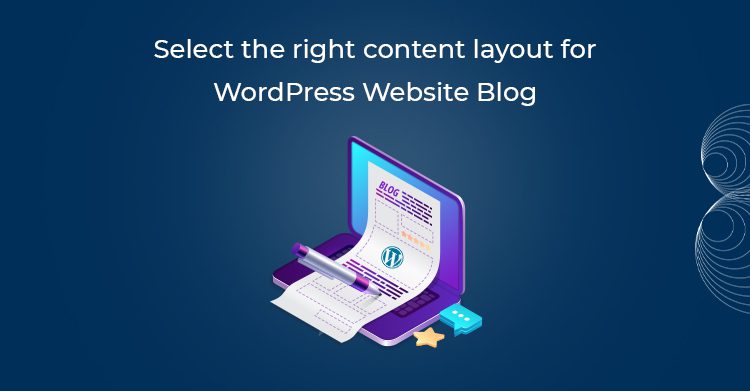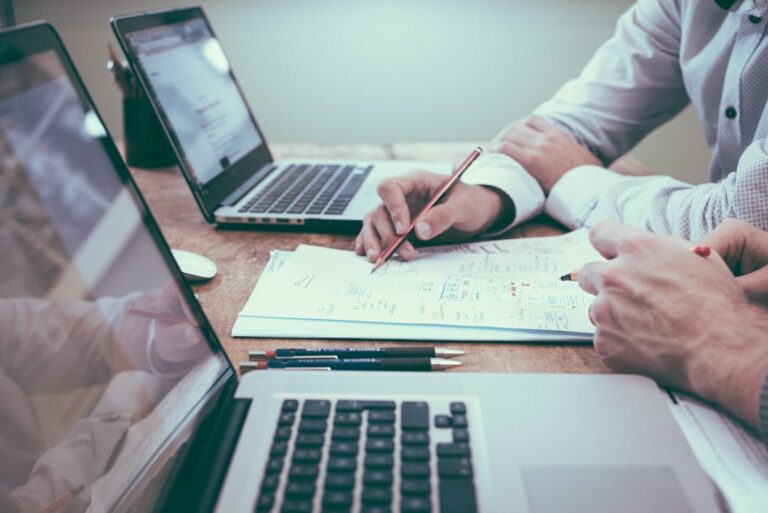SEO, design, and content are an essential parts of your website. To achieve success in a digital market, you have to move beyond just these essentials. As a business and website owner, it is important to find a balance between engaging visitors for a long time and improving your conversion rate. If you’re considering hiring custom WordPress development services, which might be the best way to build a website exactly like your expectations and requirements.
Before you start looking for a WordPress management service to undertake selection for content layout, here are some questions you need to answer:
- Are the featured images you’re using heavy?
- Does your blog have detailed and in-depth content?
- Will you constantly post content on the website?
- Is it an eCommerce platform?
The content layout is effective and important enough to attract your viewers. The layout makes content more clear, to the point, and understandable. Here are two key points you need to consider before deciding the layout:
- Readability: the font and color combination should be right as it is vital to display the content clearly. The layout must not make the text look blurry or hard to read.
- Easy access: content layout needs to be responsive on different devices. All the clickables must also work easily.
Content layout for your WordPress website
List content layout
It is a design template that is most useful for blog posts. The layout includes images, titles, and an excerpt from each blog. Advantages of using a list content layout in a WordPress website are:
- Increase the readability of your content.
- Provides easy navigation to people so that they can scan the content faster.
- This layout makes your website mobile-friendly as people usually navigate vertically on their smartphones.
- You can freely adjust the width of your list, increasing the readability of your device.
Usually, a simpler layout is considered the best choice, but if you need a more stylish look, you may also hire custom WordPress development services. They could give you better options for working on featured images, fonts, color schemes, and buttons.
Grid content layout
A grid content layout will display the blogs side-by-side with the featured image within the grid. The layout follows a card-based design where each card includes a title, a featured image, and an excerpt of the blog. This layout is mostly opted because:
- You can use the white space to display more content or posts in the rows and columns.
- WordPress developers can add custom backgrounds with some unique attributes in the card-based design.
However, this content layout style can be a little more complicated as it displays horizontal blog posts. Be a little careful about the space and display as they may appear cluttered, easily. This might result in increased bounce rates as the users will find it difficult to navigate through the website and access the blog posts.
Full Page Content Layout
The content layout displays blog posts on the entire web page. Since this style occupies the entire width of the web page, it will increase the readability of the blog and also incorporate larger featured images and text. The benefits of using full page content layout are:
- It can be most useful for personal and travel blogs.
- Makes navigation more clear and easy.
- Gives the freedom to add fancy text styles.
- You can add larger featured images to make the post look more engaging.
Masonry Content Layout
The layout adds different sized grid boxes within the same layout. You get a better chance to engage with the audience as it is a more convenient content display style. A few reasons why people like masonry content layout are:
- The users can highlight the posts that have higher chances to gain visitors’ attention.
- The content visual becomes more compelling giving developers the freedom to use high-quality featured images and grab users’ attention.
The major drawback of this layout is that it sometimes doesn’t allow you to add excerpts of the blog post. This means that you need to hire WordPress management services to make convincing titles and images for the audience.
WordPress Themes for Blog Layouts
Here are some WordPress themes that configure the display of the blog posts.
Full-Page Blog Layouts
- Fullpane: it offers a full-screen experience on the whole website and not just the blog posts. In this layout expect full-width images, fullscreen backgrounds, and no sidebars.
- Pineapple: it is a single-column layout WordPress theme that allows you to add a large featured image, snippet, and button for “continue reading”. On each blog post, you will see clear and simple related posts and social links added to your content.
For a Traditional Blog
Here are a couple of WordPress blog themes that look nice.
- Beautiful: it is a super-simple theme that provides you a standard-looking blog with shorter sidebars. Choose Beautiful for a gorgeously minimalist look.
- Corner: the theme gives you a traditional blog look. You get different navigation variations in the page’s top left-hand corner. It is a visually-oriented theme.
For a Masonry or Grid Layout
For portfolios and blogs, a grid or masonry layout is a great option.
- Total: you get access to demos with this theme. A masonry grid is recommended for a grid layout for blogs. Each blog post is presented in a card-like image which once clicked opens to a full blog image.
- Art: it is a multipurpose theme to present portfolios but also a great option for blog-specific requirements.
Business Themes for Blogs
It is a simple category for traditional business websites. Some of the WordPress themes that include blog layouts are:
- Elegant: it is a free theme that includes all the features expected from a business theme. Apart from a business theme, it has excellent and clean blog templates.
- Karma: the theme includes professional features and elements that are best suited for modern and minimal blog designs.
Tips To Choose the Right Content Layout
- Your blog target: Clearly define your content’s objective as it heavily impacts your decision to choose the WordPress layout.
- List your features: Make a list of blog post elements you want to match your requirements. Some of the features could be:
- Social media icons
- Custom fonts
- Color of the layout
- eCommerce compatibility
- Review or comment section
3. Keep it simple: Avoid choosing content layouts that are too loud with the animations, colors, features, text. Make a simple website design that increases your accessibility and improves your navigation.
4. Responsiveness: The layout must be adjustable to every device or screen size. Work to improve the response time of your web pages and match it with the search engine’s expectations.
5.Check compatibility with your browser: Browser compatibility lets you target more audiences as it makes accessing different browsers easy. WordPress layouts are usually compatible with all browsers but there are chances that not all tools and extensions will be supported.
Conclusion
choosing the right content layout seems arbitrary, but the concept really matters. A content layout decides how the visitors would interact with your content foremost and how it will impact the first impression.
Considering your blog’s layout and absolutely every element of the website, each detail is important and carries weight in terms of overall brand image. Hopefully, this blog helps you in choosing the right layout to put content on your WordPress website.
465 Media is a custom WordPress development services provider for small and medium sized businesses. We offer comprehensive solutions for WordPress users, so, contact us if you are looking for something similar.




